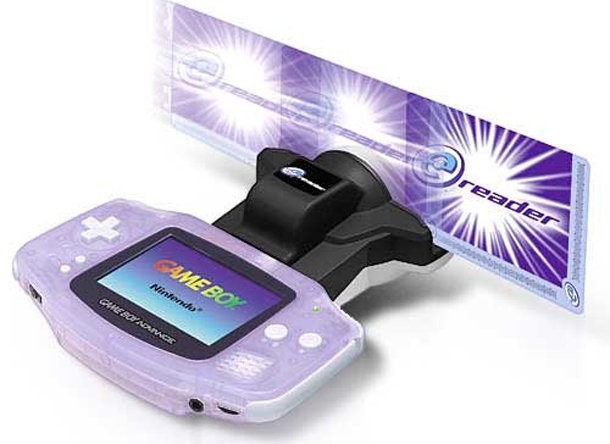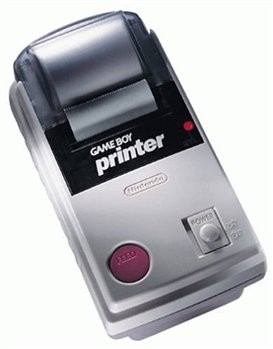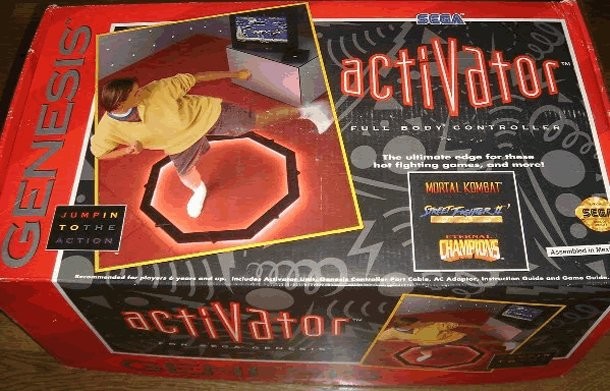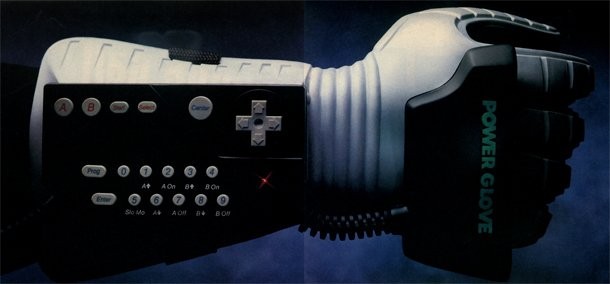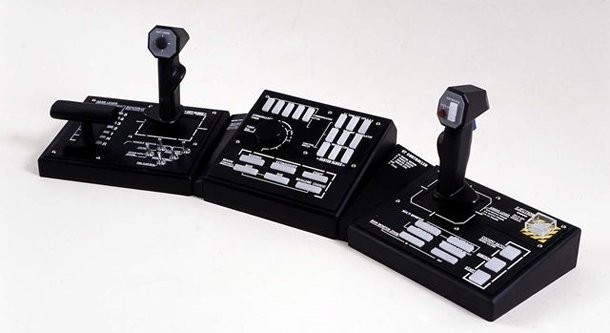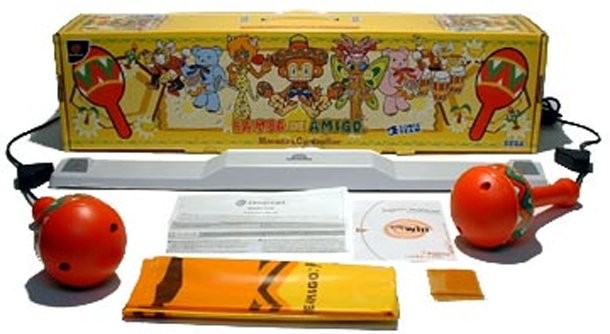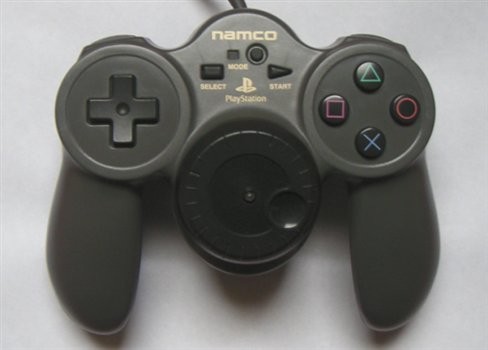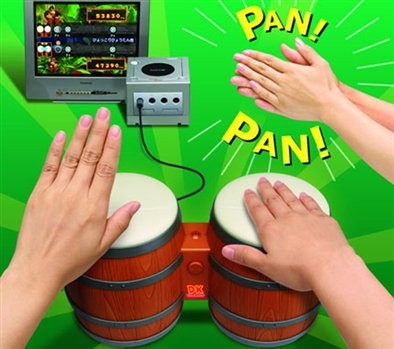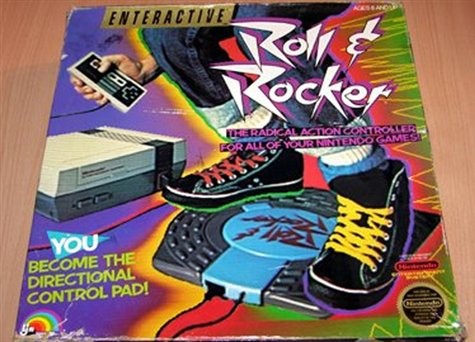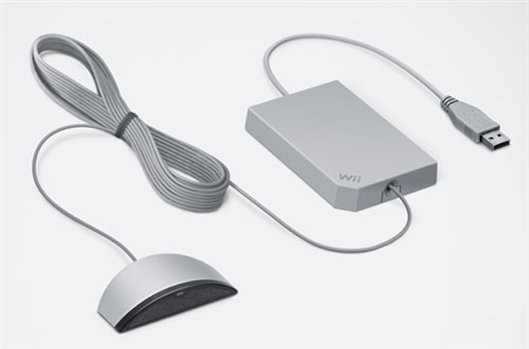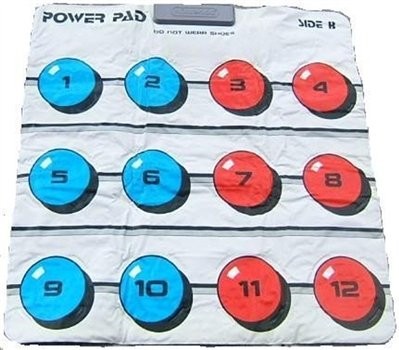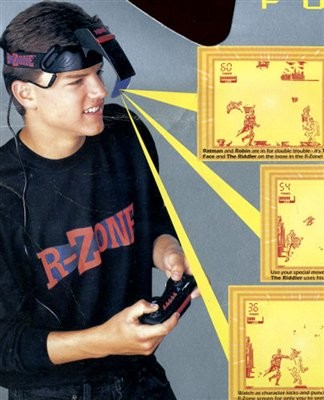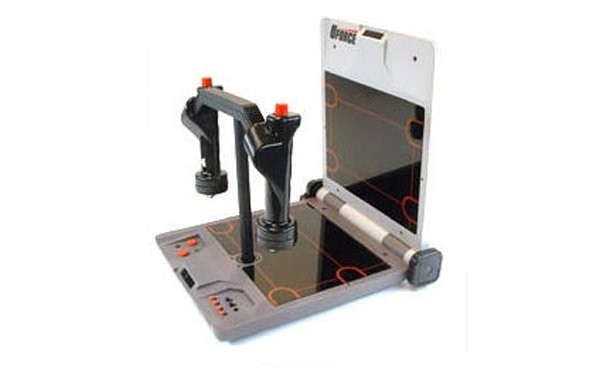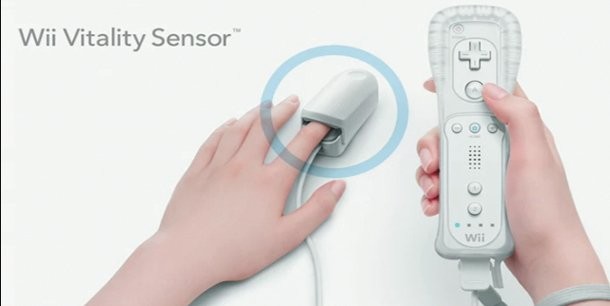Please support Game Informer. Print magazine subscriptions are less than $2 per issue
The Most Useless Peripherals In Gaming History
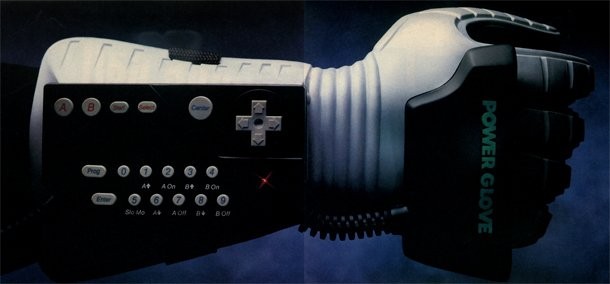
Throughout the history of video games, hardware manufacturers and third parties have never been content to just let controllers be. Why would someone want a perfectly-functional and dignified controller that fits naturally in your hands when you can have some laughably contrived hunk of plastic taking up space in your closet? In this article we'll take a look at the history of these ill-conceived peripherals. Granted, some of these actually did perform their advertised duties perfectly fine, but were eventually rendered useless thanks to the limited amount of games that supported them (i.e. Dreamcast maracas). Despite how well they did or did not work, all of these accessories wound up being little more than basic clutter.
Guitar Hero: On Tour Controller
As you can see from the above image, there is no way to play or even hold this device without looking like a complete and utter goober. This virginity-preserving contraption straps onto the DS Lite by utilizing the Game Boy Advance port, and comes with a stylus for use with the touchscreen. Not only is it useless thanks to the fact that it's only used for three games, but it also requires a port that isn't even on the current generation of DS systems. If you own a DSi, you'll have to stick with respectable titles like Professor Layton, Mario & Luigi, or Castlevania rather than jerk around with a fake guitar grip. If your guitar accessory makes a Rock Band guitar seem like a real Les Paul, there's a problem.
The second of the two GH: On Tour games touted wireless multiplayer for all the situations like this that regularly pop up in your day-to-day life:
That's right, kids...remember all those times you were playing your DS like a guitar at some diner, only to see some super-hot chick playing the same game right next to you? Well, instead of sitting there playing through your solo careers like a couple of chumps, you guys can exchange a knowing glance, scoot close together, and RAWK OUT! (Note: Nothing even resembling the events in this previous statement or preceding video has ever happened to anyone ever)
The Aura Interactor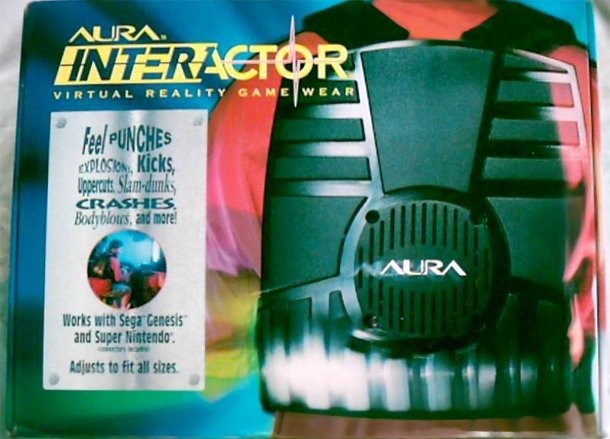
As a kid who was unhealthily obsessed with Mortal Kombat, I wanted anything that claimed to make the experience even better. Based on the Aura Interactor's advertisements, it would let you "feel punches, explosions, kicks, uppercuts, slam-dunks, crashes, body blows, and more!" I wasn't exactly sure how it was supposed to do this, all I knew is that I wanted it. As it turns out, this "Virtual Reality Gamewear" amounted to little more than a backpack made out of subwoofers. All it really did (other than give you a sore back) was turn in-game sounds into slight vibrations like some sort of comically oversized Rumble Pak.
Nintendo e-Reader
It's always a dumb idea when a system that prides itself on its portability gets a bulky, cumbersome accessory, but the e-Reader went above and beyond the call of stupidity. By attaching this unsightly hunk of plastic to your Game Boy Advance, it was able to read data from paper cards that Nintendo sold at various retailers.
What did these paper cards do, you ask? Well, they'd let you play classic NES games and give you items in games like Super Mario Advance 4: Super Mario Bros. 3 (the numbering system for the Mario re-releases on GBA was almost as boneheaded as this accessory). While classic games and free items are rarely a bad thing, the e-Reader had the distinct ability to make the process way more trouble than it was worth.
Each classic NES game came in a pack of five cards. If you wanted to play Excitebike, you had to buy its corresponding pack of cards and then swipe each of the five cards twice (front and back) before the game loaded.
Obtaining in-game Mario items using the e-Reader was the main offender, however. You see, the e-Reader utilized the Game Boy Advance cartridge slot. As you might imagine, Super Mario Advance 4: Super Mario Bros. 3 is also a Game Boy Advance cartridge. This meant that in order to get that extra fire flower or invincibility star, you had to connect the e-Reader GBA to another GBA that you were playing the game on. Because when I think portability, I think of two Game Boys linked together with a giant plastic tumor growing out of one of them.
Game Boy Printer
This accessory was released alongside yet another Game Boy accessory, the Game Boy Camera. I won't make too much fun of that, because I had a decent amount of fun taking dumb pictures and editing them back before I had access to digital cameras or Photoshop. Despite the camera software being moderately fun, its image quality was dubious at best. For some reason, Neil Young used a picture taken with the device for the cover of his 2000 album Silver & Gold. Let's take a look at how well that turned out.
Yep, that's either the legendary folk songwriter behind classics like "Old Man" and "Down By The River"...or, it's blurry footage of an extraterrestrial on Unsolved Mysteries.
I've spent most of this entry talking about the camera's quality, but this is directly tied to why the Game Boy Printer was useless. While blurry, pixelated images might be fine for the software's minigames and editing tools, they certainly weren't anywhere near print quality. It was compatible with a handful of games, but god knows why you'd want to be printing anything from Austin Powers: Oh, Behave! or Mary-Kate And Ashley Pocket Planner.
Sega Activator
This can also be filed under "things I wanted to play Mortal Kombat with when I was ten." Essentially, the Sega Activator was a giant plastic octagon that you'd stand inside while you played fighting games. Ideally, it would allow you to control the game via your real-life punches and kicks. Considering it's included on this list, you've probably already surmised that it didn't work that well.
It utilized infrared beams to detect where you were punching and kicking, which meant the device could easily be confused by ceiling fans, light fixtures, or even a sloped ceiling. And that's assuming you even got it set up correctly. Take a look at how complicated the process was.
Complex setup instructions and imprecise controls led to the speedy death of the Activator. These same issues were also experienced by...
The Power Glove
Unlike Sega and the Activator, Nintendo put some serious marketing work and effort into the Power Glove. It featured prominently in the Nintendo-produced film The Wizard, and was even referenced in Freddy's Dead: The Final Nightmare.
But what exactly was the Power Glove supposed to do? Its commercial didn't clear up many questions.
One part of that montage shows "Rad Early 90's Dude" controlling 1942's shooter action by simply waving his hand around. Kind of cool, I guess...except most shooter fans would probably prefer the precise control of a d-pad. Then we see him pounding away at Bald Bull in Mike Tyson's Punch-Out. Alright, now that could be sorta fun...except, wait...didn't you need to use left punches from time to time in that game? I'd imagine Don Flamenco would be a totally different fight with this monstrosity strapped to my hand.
Problem is, this control method is questionable even if it worked. You need a d-pad for most games. You need to use both hands in a fighting game. Regardless, the Power Glove did not work the large majority of the time. I remember getting it for Christmas one year, and my initial excitement rapidly declined as I watched my father become hopelessly confused by the complex setup instructions. I attempted to help him out with the sensor placement, but no arrangement made the NES recognize the glove's location correctly. I remember finally resigning to the fact that the motion control wasn't going to work, and sadly played Tiny Toon Adventures by holding my arm sideways and just using the d-pad and buttons on the glove (until I realized how stupid that was and just went back to the NES controller).
Steel Battalion Mech Controller
Holy crap. Keep in mind, this is a list of the most useless peripherals...that doesn't mean they can't be kind of cool. I'm not even into mech titles, but I'd imagine it would be hard to go back to a standard controller after using this bad boy. Bundled with the Steel Battalion game, this 40-button controller cost a steep $200.
Each time a mission commenced, you'd have to go through an elaborate startup sequence that utilized numerous buttons and switches. Another novel mechanic involved the eject process - if you didn't hit the button when prompted, the game erased all of your save data.
Again, this all sounds pretty cool. Why is it useless, you ask? Try playing any other game with this thing.
Samba de Amigo Maracas
Like the Steel Battalion behemoth, these maracas worked perfectly fine for the game they were assigned to, but were absolutely useless when used with anything else. Interestingly, these controllers from 2000 work significantly better than the Wii remotes do in Samba's remake almost a decade later.
R.O.B.
If I'm to believe this commercial, using R.O.B. in conjunction with your NES will...launch your house into space? Ok, that's pretty sweet I guess. What's that? Oh, it just moves blocks back and forth and is only compatible with two games? Nevermind.
Namco JogCon
The confusingly-named JogCon was originally packaged with a special edition of Ridge Racer Type 4, and was supposed to offer up a never-before-seen level of precision in racing games. It attempted this via the use of a three-inch wheel in the center that's reminiscent of old VCRs and tape-editing decks. It never caught on, as gamers either wanted to play their racing games with a standard controller or a full-blown wheel accessory...not something in between.
DK Bongos
Making the idea of electronic maraca controllers sound almost conservative by comparison, the Gamecube's Donkey Konga released with this ridiculous bongo controller. Outside of DK Jungle Beat, this controller was only compatible with the Donkey Konga music games. These had a strong multiplayer focus, so you'd have to own four sets of Gamecube bongos to fully experience the title. However, I'm surprised I was never driven to purchase this game based on how sweet this commercial was.
The Roll & Rocker
If it's not obvious so far in this list, Nintendo loved experimenting with wacky motion-based control methods long before the Wii won the hearts of soccer moms everywhere. This oddity made it so you could control the d-pad's functions by shifting your body weight back and forth. Why? Because Nintendo wanted you to, that's why.
At least with the Power Glove, the connection was more apparent - "Oh cool, I could punch in real life and Little Mac would do the same!" However, it wasn't really clear why you'd want to use this thing to maneuver Mega Man across a magnetic block chasm or steer your vehicle in R.C. Pro-Am. The only possible application I can think of is maybe in Skate Or Die, but even that's a stretch. Activision tried this approach two decades later with Tony Hawk Ride, and you've seen how successful that was.
WiiSpeak
Nintendo made WiiSpeak a large part of their 2008 E3 press conference, claiming it would finally be bringing the essential voice component of online play to the Wii. The company has always been late to the party when it comes to online functionality, but better late than never, right?
Unfortunately, WiiSpeak still has not caught on in any significant way. It worked for Animal Crossing: City Folk, The Conduit, and (most recently) Monster Hunter Tri, but didn't support no-brainers like Call of Duty 4: Modern Warfare Reflex. Our own Andrew Reiner officially declared WiiSpeak dead in a blog post last October.
The Power Pad
If you're in your mid-20s or older, I know the first thing you thought when you saw the above picture - "Oh, I used to have so much fun with that thing! I remember how me and my [brother/sister/friend/cousin/etc] used to play Track & Field with that! We didn't even run on it like you were supposed to, we just got on the floor and hit the buttons as fast as we could with our hands."
Guess what? That's ALL you did with the Power Pad. That's all anyone did with it. You have more fingers on one hand than the Power Pad had compatible American games, and the ones that did support it offered little more than "slap the circles as fast as you can with your hands" gameplay. Also, I'm pretty sure that things like stride length, body conditioning, and general leg strength play into how fast a person can run...not just "how fast can you tap the ground with your feet?"
Tiger R-Zone
If there's one thing I've learned for sure while typing up this list, it's that I was a major sucker for stupid peripherals back when I was a kid. The Interactor, the Activator, the Power Glove...I wanted them all. However, I think the Tiger R-Zone may be the one that hornswoggled me the most.
While not a console peripheral, I felt its place on this list was warranted thanks to how downright terrible it was. Take a look at the above ad. What do you see? I can tell you what the kid version of me saw - a dude with a sweet visor that was being beamed straight into the game he was playing. I somehow convinced myself that if I got the Virtua Fighter version of the R-Zone for Christmas, the little screen thing that popped down over your eye was going to beam the graphics directly into my skull. I imagined an arcade-perfect, incredibly-realistic Virtua Fighter experience encompassing my entire field of vision.
Apparently I had some incredibly selective vision, as I somehow missed the right side of the above advertisement. If I had taken the time to check out the actual screens, I would have seen the crappy visual style of every $5 Tiger handheld that I was ever stupid enough to pick up at Wal-Mart. Those looked bad on a 2-inch screen, and they looked way worse floating on a translucent screen directly in front of my eyeballs.
U-Force
From a 1989 print advertisement for the U-Force:
"There's nothing to hold, nothing to jump on, nothing to wear, U-Force creates a power field that responds to your every command--making you the controller. It's the most amazing accessory in video game history - and it will change the way you play video games forever. It's the challenge of the future. U-Force. Now nothing comes between you and the game."
Sounds kind of like the PR speak we've been hearing about Natal for the last few months, doesn't it? Instead of a sophisticated camera that tracks your body, however, the U-Force was essentially two infrared sensors that attempted to read your hand's motions. Like the Power Glove, the U-Force also tried (and failed) to mimic real-life punching motions for Punch-Out.
Wii Remote Extendo-Things
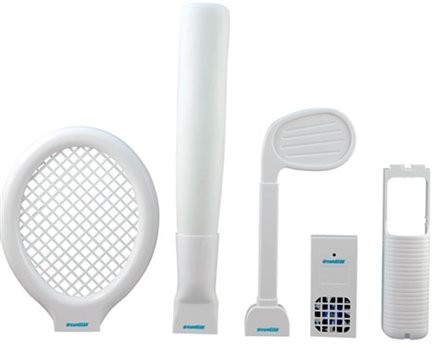
Alright, now these things were just ****ing stupid.
Honorable (Future) Mention
As you can see, one company outperformed all others in terms of their output of crappy peripherals. While the intention of this list wasn't to specifically target Nintendo's questionable accessories, the sheer quantity made the outcome inevitable. Also, I'd like to reserve this one last spot for another add-on that will inevitably appear on future versions of lists like the one you just read...

